- Home
- Encyclopedia
- Tracking The Past: The National Historic Trails...
Tracking the Past: The National Historic Trails Interpretive Center
Wyoming’s character might be called wild or serene, modern or ancient, vast or intimate, rugged, yet fragile. After 133 years it remains the ninth largest and least populated state in the nation, averaging six persons over each of its ninety-seven thousand square miles.
Rivers are modest in Wyoming’s semi-arid landscape. The combined volume of water flowing out of Wyoming in streams that originate here is a mere fraction of that measured at the mouth of the Columbia River. Snowpack at higher elevations varies greatly from year to year. Here, grasslands of the plains fade into the realm of sagebrush, while forests of pine, fir, and aspen blanket isolated ranges that introduce the westbound traveler to the Rocky Mountains.
It is an environment that shapes people and their lives like no other.
In the central part of the state, a gathering place draws thousands of visitors every year to a vantage point above the North Platte River at Casper.
Nestled into the landscape here is the National Historic Trails Interpretive Center, designed to remind us about a time of bold American territorial expansion and its profound consequences.
Stories told at the Trails Center reflect the nation’s heritage, beginning with the first people to explore this terrain. Their steps made original pathways across the prairies, through desert badlands, and into the mountains—pathways that others would follow like the waters of a flood that would never recede.
Image
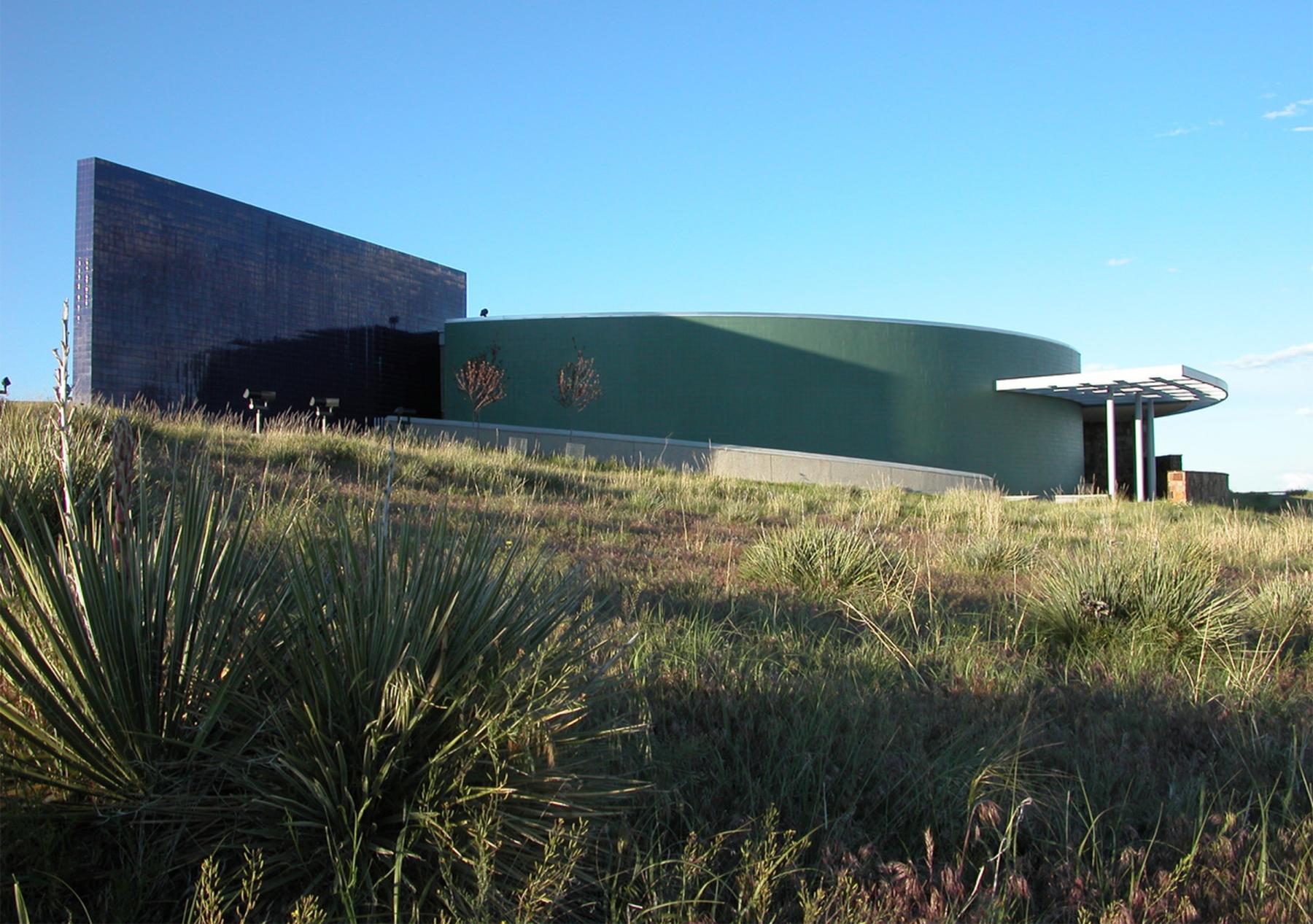
Historical background of the trails
The great overland migrations to the far West in the 1840s, 1850s and 1860s reinforced a growing zealous national perspective, often referred to as America’s “manifest destiny.”
Early in that period, the grandchildren of American colonists would finally resolve the presence of Great Britain on the continent, after two wars fought by their ancestors with that empire.
This time, the setting would be the Oregon Country, and America’s ability to prevail would take the form of peaceful strength in numbers. One necessary result that resolved the dual occupation of the Pacific Northwest would be a permanent northern boundary for the United States by mid-century.
Other emigrants would set out for the Great Salt Lake in the Territory of Mexico as an expression of their right to worship as they chose, while still more travelers followed a hunger for adventure promised by the discovery of gold in California.
Meeker and trail-marking
Fifty years after the peak of those migrations, a few aging pioneers proposed to educate a new generation about the overlanders’ hardship and sacrifice.
Marking historic trails and teaching schoolchildren about the growth of the United States was a meaningful cause for many pioneers, personified by Ezra Meeker and William Henry Jackson. Both men had walked through long, eventful lives in the West.
Image
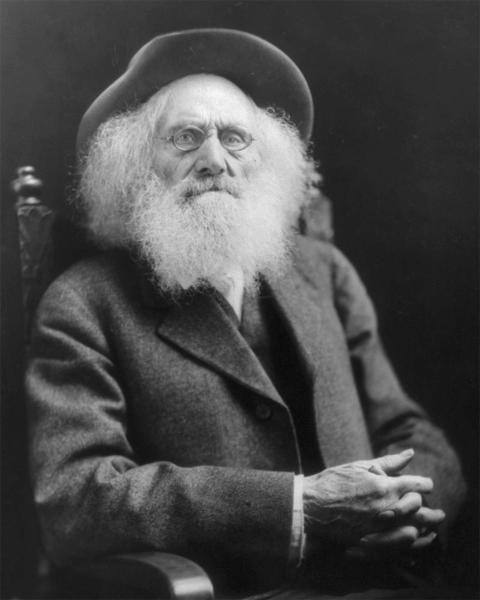
Traveling east along the Oregon Trail by ox team and wagon in 1906 on the first of several such journeys, seventy-six-year-old Ezra Meeker created markers that would endure, and no medium fits that requirement better than solid granite. Some original monuments from his enthusiastic missions still sit beside the trail more than a century later.
Meeker prompted civic groups along the way to fund and erect permanent monuments to the Oregon Trail story and its participants. On his visit to Casper in 1906 Meeker was grateful to find that the community had already pledged $1,500 to establish an impressive tribute to the great Westward migrations. More than half the cost of carving and transporting the monument, plus skilled workmen to construct its base and erect the pillar, would be provided by the Chicago and Northwestern Railroad. When it was completed in 1911, Ezra Meeker declared Casper’s monument to be the finest on the entire Oregon Trail. Originally located beside the Chicago and Northwestern Depot in Casper, the monument was moved a few years later to its present site across Center Street from the Works Progress Administration-Era City-County Building.
Ezra Meeker and his contemporaries inspired establishment of an Oregon Trail Commission by the Wyoming Legislature in 1913 to carry on their work in a formal manner. You can visit markers across the state that were placed and dedicated by the Commission and by the Daughters of the American Revolution, as well as by individual communities. For years, Ezra Meeker and his followers succeeded in their efforts to inspire patriotic pride in their fellow citizens and to cultivate vital support for trail marking among elected officials.
Today, easily recognized official highway signs and symbols remind us that we are following important routes in the history of our nation, now designated by Congress as National Historic Trails.
[Editor’s note: Special thanks to the Wyoming Cultural Trust Fund for support that in part made this article possible.]
Image
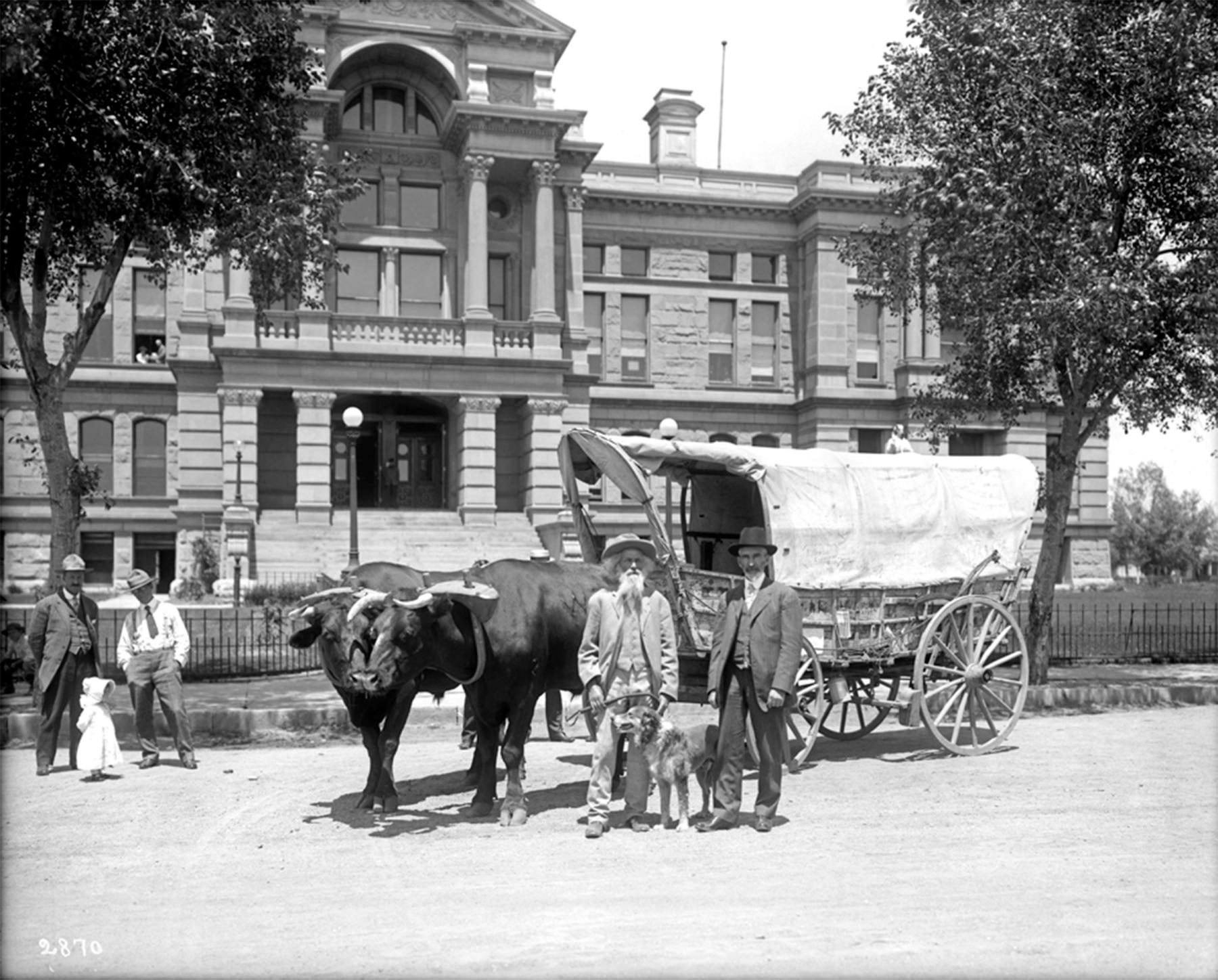
Citizen groups and the trails
There is a quality that is common among us as Americans, regardless of our origins – a desire to know the stories of our past. In the same year that Ezra Meeker and his ox team first headed east along the Oregon Trail, President Theodore Roosevelt signed a key piece of federal legislation into law: the Antiquities Act. Its purpose, in part, was to protect the fragile evidence of America’s earliest inhabitants that was being plundered on the public domain. By so doing it encouraged responsibility for the care of antiquities in all citizens. It was the dawn of our young nation’s formal recognition of historic preservation as a vital ethic of society.
The Oregon Trail Memorial Association, founded by Meeker and William Henry Jackson just six years before Meeker’s passing, soon grew into the expanded American Pioneer Trails Association under the guidance of Professor Howard Driggs, a son and grandson of Mormon Pioneers.
Driggs recruited widespread support in the 1930s to mark the routes and conduct commemorations along the Oregon, California, Mormon Pioneer, and Pony Express trails, from Missouri to California. He located and interviewed the few Pony Express riders still living and documented their reminiscences in his book The Pony Express Goes Through.
The nation’s awareness of the historic trails was thoughtfully reinforced by the hard work and devotion of the American Pioneer Trails Association. Celebration of the 75th Anniversary of the Pony Express by the association brought the organization to Casper in 1935. That summer, in their own 25th Anniversary Year, the Boy Scouts of America served as modern-day riders who carried commemorative mail from Sacramento, California to St. Joseph, Missouri on horseback.
National Trails System Act
Late in the 20th Century, lobbying by grassroots organizations eventually resulted in the National Trails System Act of 1968. In that legislation and its amendments, Congress and President Lyndon B. Johnson acknowledged opportunities for recreation and learning about our nation’s past that can be enjoyed by visitors along trails designated on public lands.
Today, the term “National Historic Trail” refers to original routes of profound significance, including those of exploration, migration, and military actions. Five such designated routes cross Wyoming, reflecting varied subcultures of our nation in the 19th Century. The Oregon, Mormon Pioneer, California, Pony Express and Nez Perce National Historic Trails saw more than a half-million souls pass through this landscape. Interpreting their motivations and goals is central to the National Historic Trails Interpretive Center’s purpose.
Oregon-California Trails Association
In 1982 a new organization was formed by dedicated historic trail advocates in the West. Called the Oregon-California Trails Association (OCTA), its mission is the same today as it was 40 years ago: to protect the remnants of those trails and to educate the public about their significance in history.
The charter members of that association were active from its beginning in promoting a home to perpetuate the epic story of America’s overland migrations. Wyoming members led by gaining the Casper City Council’s approval to form an exploratory Task Committee. A feasibility study was then conducted that persuaded the city and the Wyoming State Legislature and Governor to support establishment of a “trails interpretive center” in Casper.
Establishing the trails center
The original Task Committee soon reorganized independently with the blessing of the city, and in 1993 the resulting nonprofit organization, called the National Historic Trails Center Foundation, enlisted the Bureau of Land Management to ensure federal support for the proposed new facility. The City of Casper generously offered title to 11 acres of land with a panoramic view of Casper Mountain and North Platte River, as the site for the proposed trails center. Together with strong support from the Wyoming Legislature and the state’s Congressional delegation, this alliance of partners guaranteed success.
Wyoming’s sole congressional representative at the time, Barbara Cubin, introduced legislation in the House that made its way through the appropriation process, as did its counterpart proposal in the Senate. By October 1998, the National Historic Trails Interpretive Center was formally purposed and funded by Congress for the benefit of all.
Image
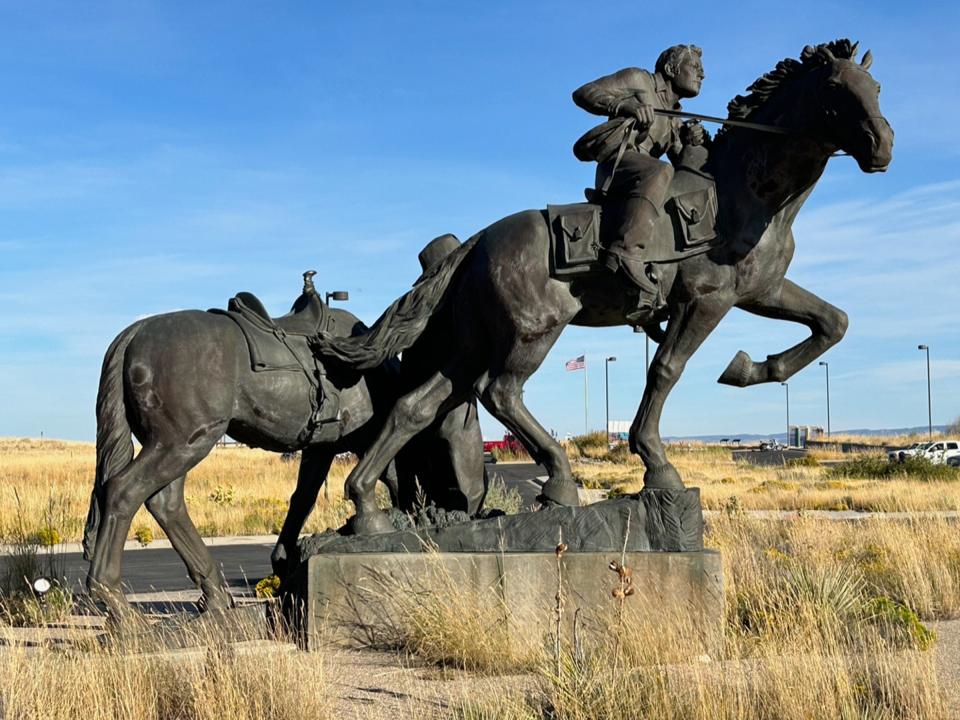
Image
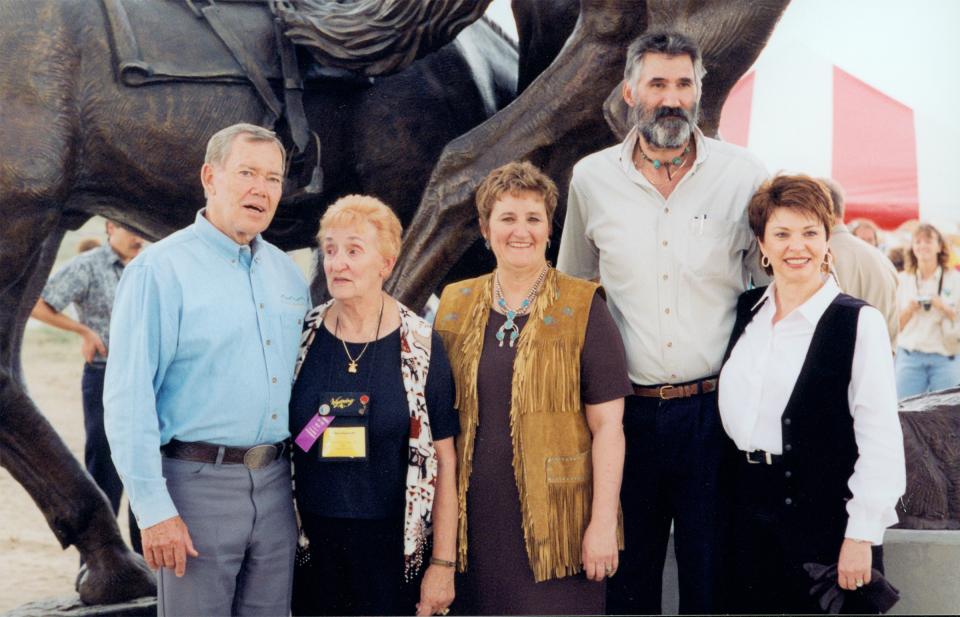
A ceremonial ground-breaking on June 21, 1999, brought together inspired supporters and dignitaries to celebrate the importance of the site to future generations. On that long-awaited day, all present acknowledged, with honor and a sense of the importance of the endeavor, the hard work necessary to achieve that significant milestone.
What followed were three years of passionate work by the foundation and the Bureau of Land Management to produce architectural and exhibit concept plans and construction drawings, create a feature film presentation and conceive and install seven galleries of interactive trails-themed exhibits.
Since first opening its doors on August 9, 2002, staff and volunteers at the Trails Center have welcomed more than 600,000 guests from all 50 states and 60 foreign nations.
In celebrating 21 years of operation, the National Historic Trails Interpretive Center is now in 2023 receiving visitors who initially came here with school classmates in the fourth grade, only today those former students are adults, bringing their own children to enjoy a hands-on learning experience.
The National Historic Trails Center Foundation and the Bureau of Land Management count many active partners. The City of Casper, the National Pony Express Association, Rocky Mountain Conservancy, Fort Caspar Museum, the Oregon-California Trails Association, the National Park Service, and the Natrona County Travel and Tourism Board work together to help Trails Center visitors reflect on who we are as a nation.
Staff and volunteers offer a variety of interpretive presentations at the Trails Center year-round, and guest speakers, re-enactors and special commemorative events attract visitors of all ages and interests.
The meaning of early travelers’ experiences
A trail can lead us to a destination, but it can also allow us to return to the place where a journey began. At the conclusion of his book, Ox-Team Days on the Oregon Trail, Ezra Meeker expressed the depth of his devotion to the experience of the overland pioneers:
Monumenting the old Oregon Trail means more than the mere preservation in memory of that great highway; it means the building up of loyalty, of patriotism, as well as the teaching of our history in a form never to be forgotten.
To learn more about the profoundly consequential mid-19th Century overland migrations in America, plan to visit the National Historic Trails Interpretive Center, open year-around at 1501 North Poplar in Casper, Wyoming.
[Editor’s note: Special thanks to the Wyoming Cultural Trust Fund for support that in part made this article possible.]
Image
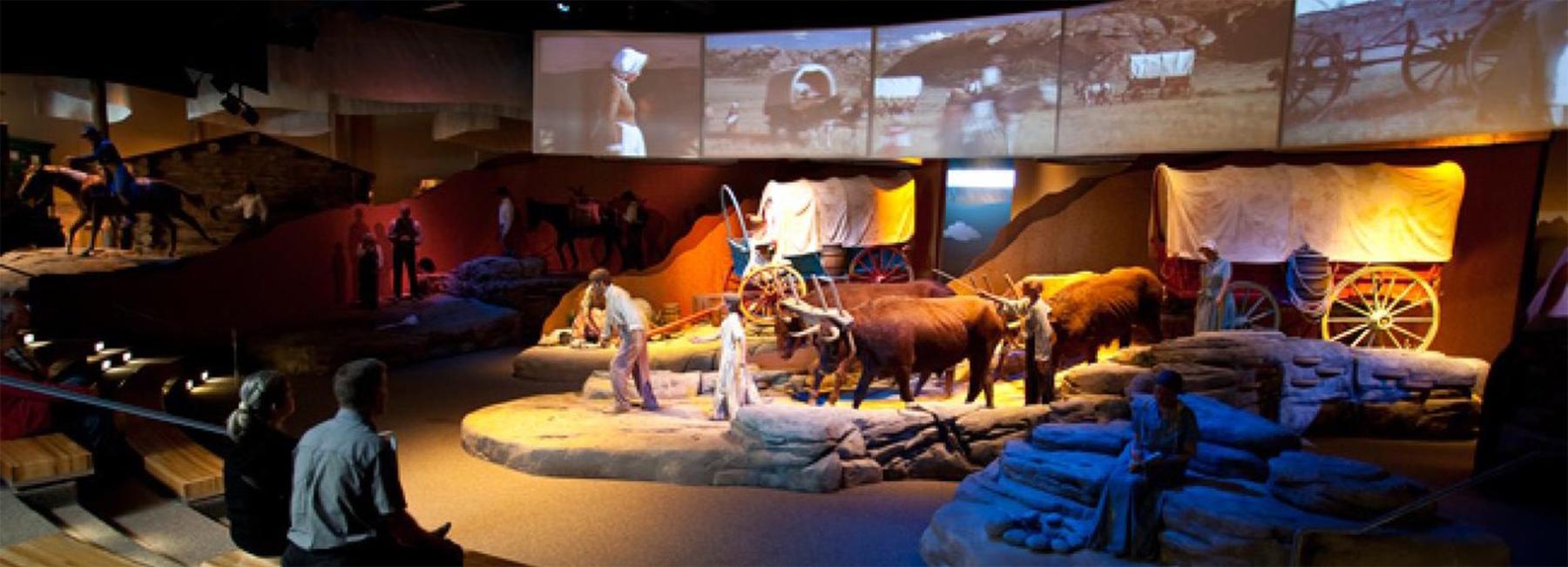
Resources
Primary Sources
Newspapers
Please Note: Numerous articles appeared in newspapers across Wyoming during Ezra Meeker’s journeys both east and west, describing his character, purpose and motivation, and his vision for a national highway paralleling the Oregon Trail. Listed below are just a few samples:
- “In Memory of Oregon Trail.” The Guernsey Gazette, Guernsey, Wyoming, Friday July 20, 1906. Volume 7 Number 35; page 1 column 5.
- “Over the Oregon Trail.” The Cheyenne Daily Leader, Cheyenne, Wyoming, Tuesday Morning December 1, 1908. Volume XLI No. 55; page 2 column 1.
- “Over Oregon Trail In Prairie Schooner.” Weekly Boomerang, Laramie, Wyoming, Thursday July 14, 1910. Page 5, columns 2 and 3.
- “Over the Trail.” The Wyoming Semi-Weekly Tribune, Cheyenne, Wyoming, Tuesday July 12, 1910. Vol. 15 No.55; page 4 column 4.
- “Ezra Meeker Leaves On the Old Oregon Trail.” The Wyoming Tribune, Cheyenne, Wyoming, Friday July 15, 1910. Vol. 16 No. 168; page 8 column 3.
- “Over the Old Trail.” Wind River Mountaineer, Lander, Wyoming, March 11, 1910. Volume 25 Number 19; page 1 column 5.
- “The Pioneer Monument.” Natrona County Tribune, Casper, Wyoming, January 25, 1911. Volume XX Number37; page 1 column 4.
Other primary sources
- 112 STAT. 2782 Public Law 105-290 October 27, 1998, 105th Congress: “An Act To authorize the Secretary of the Interior to provide assistance to the National Historic Trails Interpretive Center in Casper, Wyoming.”
- “Cooperative Agreement Number K910A970020 Between the National Historic Trails Center Foundation, Incorporated and the Wyoming State Director of the Bureau of Land Management.”
- “An act providing for the marking of the Old Oregon Trail and other historic landmarks; making an appropriation therefor; and providing a penalty for defacement of such monuments or markers.” Enrolled Act No. 34, Wyoming Legislature 12th Session. Approved February 20, 1913, Joseph M. Carey, Governor.
- Howard R. Driggs Collection, 1890-1965; Ms.120. Special Collections, Gerald R. Sherratt Library, Southern Utah University, Cedar City.
- Walter Meacham Papers. University of Oregon Libraries, Special Collections and University Archives, Eugene, Oregon.
- 105th Congress 1st Session; H.R. 2186: “To authorize the Secretary of the Interior to provide assistance to the National Historic Trails Interpretive Center in Casper, Wyoming.” July 17, 1997.
Secondary Sources
- Bureau of Land Management. “National Historic Trails Interpretive Center Twentieth Anniversary Administrative History.” (Internal Draft) March 2022
- Bradley, Marie Merriman. “Political Beginnings in Oregon. The Period of the Provisional Government, 1839-1849.” The Quarterly of The Oregon Historical Society, Vol. 9 No. 1 (March 1908), pp. 42-72.
- Dale, Harrison C. “The Organization of the Oregon Emigrating Companies.” The Quarterly of the Oregon Historical Society, Vol. 16, No. 3 (September 1915), pp. 205-227
- Elliott, T.C. “The Earliest Travelers on the Oregon Trail.” The Quarterly of the Oregon Historical Society, Vol. 13, No. 1 (March 1912), pp. 71-84
- Meeker, Ezra and Howard R. Driggs. “Ox-Team Days on the Oregon Trail.” Copyright 1922 by Ezra Meeker. World Book Company, Yonkers-on-Hudson, New York 1927.
Illustrations
- The photo of the Trails Center is from Wikipedia. Used with thanks.
- The Library of Congress portrait of Ezra Meeker is from Wikipedia. Used with thanks.
- The photo of Ezra Meeker and Gov. B.B. Brooks in front of the Capitol is from Wyoming State Archives. Used with permission and thanks.
- The photo of dignitaries at the dedication of the statue and the image of the trails center exhibits are courtesy of the Bureau of Land Management. Used with permission and thanks.
- The photo of the statue is by Tom Rea.
